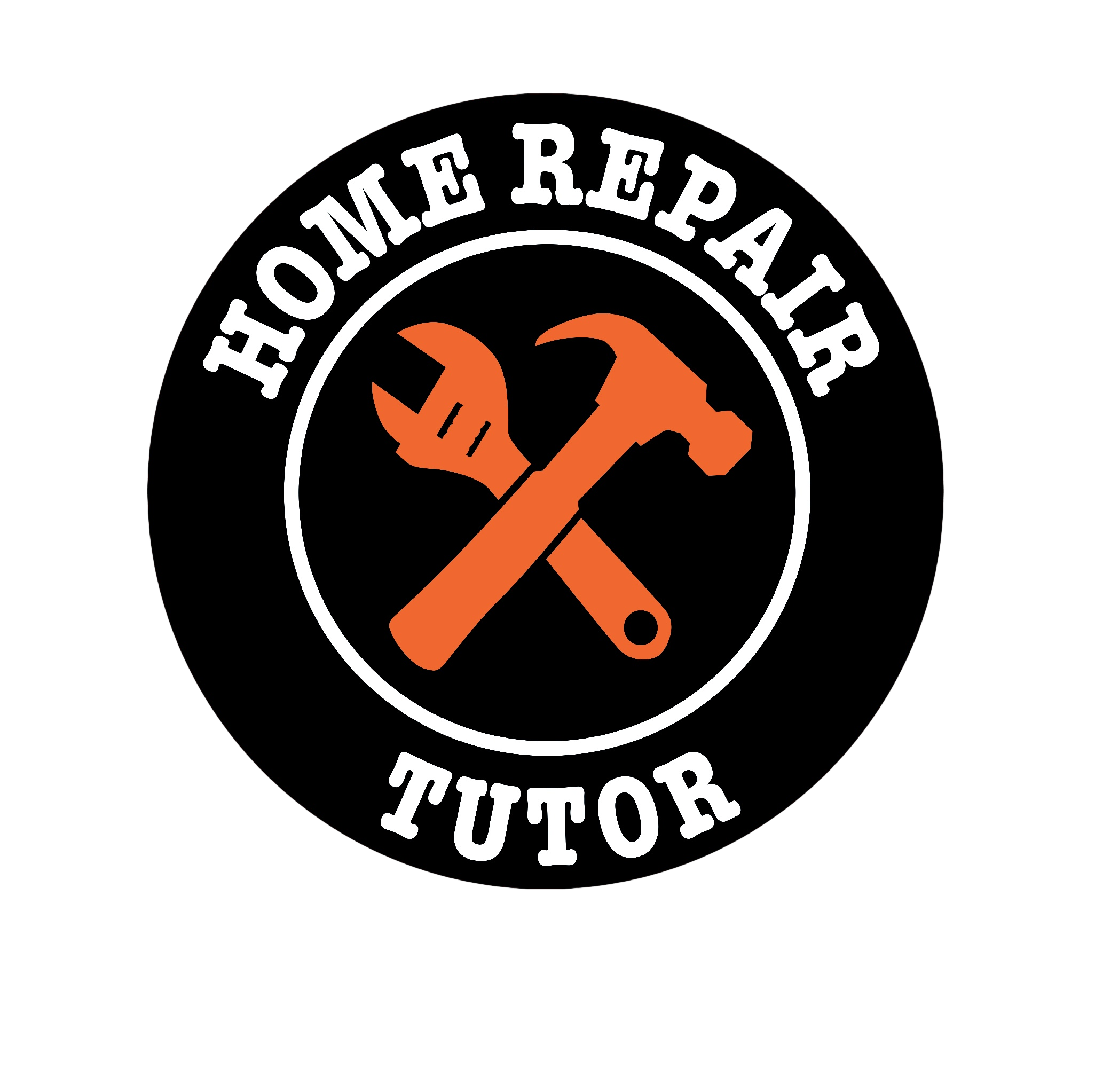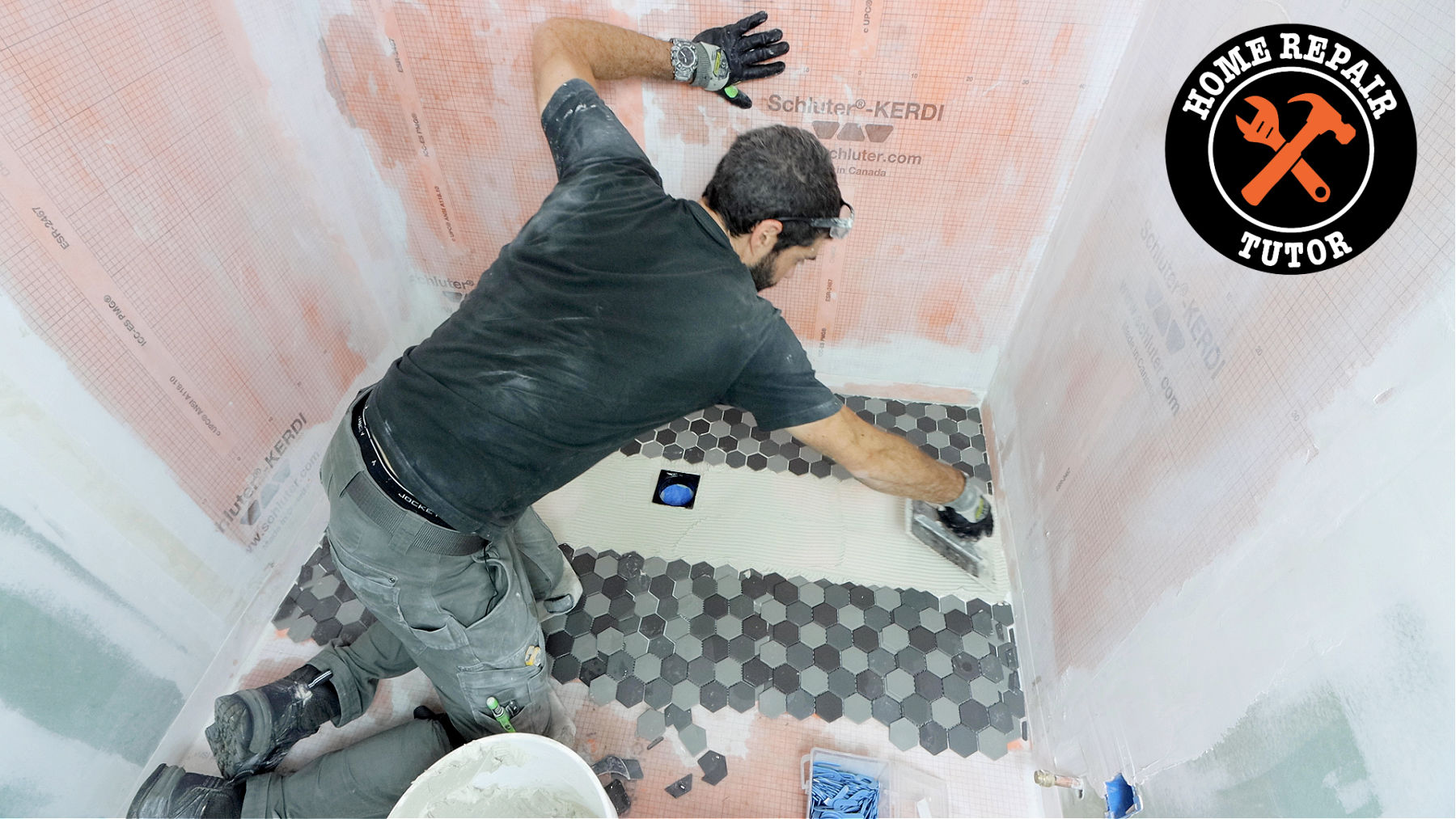Are you trying to find the best tile for shower floor projects?
Sadly, homeowners and contractors make mistakes when choosing tiles.
This can lead to ugly tile shower floors as well as wasted time and money.
Today, you’ll learn which tiles are the best for shower floors and which tiles are the worst.
Let’s dive in!
Common Tile Shower Floor Questions
You might be looking for quick answers to common tile shower floor questions.
So, here are a few that might help out.
What type of tile is best for a shower floor?
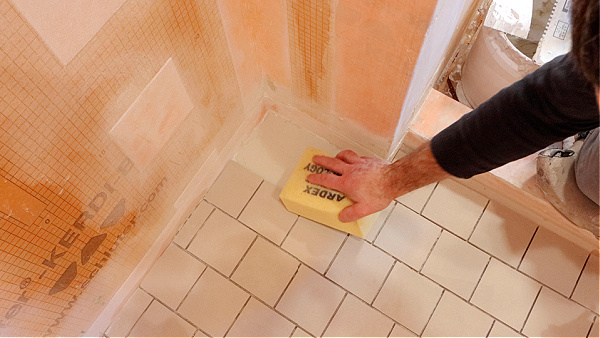
Non-slip ceramic or porcelain tiles are great options for shower floors. Primarily because they keep the user safe and often don’t have to be sealed.
I recommend two-inch mosaic square or hexagon tiles. These will conform to pre-sloped shower trays, e.g. Schluter shower pans, Wedi, KBRS, etc. Non-slip tiles are good because they keep the user of the shower safe.
What do you put under a tile shower floor?
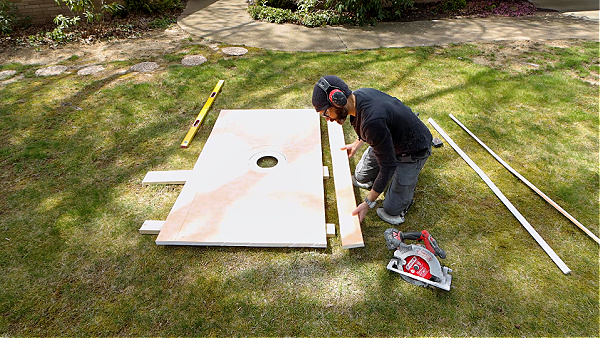
It’s best to use pre-sloped shower pans inside showers, e.g., Schluter shower pans. When properly waterproofed, these types of shower systems evacuate water and can accept most tile types.
Outside showers, it’s best to use either uncoupling membranes like DITRA or cement backer board over plywood subfloors. When properly installed, uncoupling membranes will waterproof the floor and prevent cracked tiles and grout.
Cement board has to be waterproofed with a liquid membrane like RedGard to safeguard against water damage and cracked tiles.
What is the easiest shower floor tile to install?
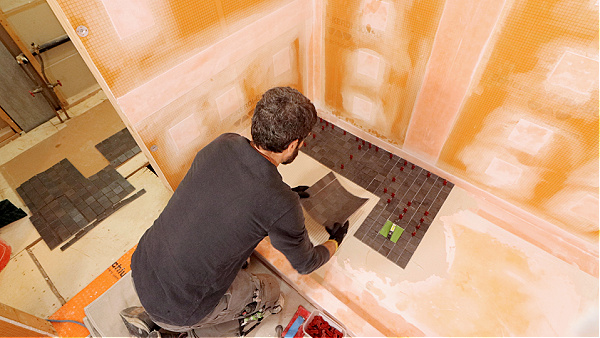
Hands down, 2-inch square mosaic tiles are the easiest to install. Especially if the shower drain has a 4-inch drain grate.
You can remove 4 tiles from the center of the mosaic mesh and fit them over the drain grate. And that’s one reason 2-inch squares are so popular for tile shower floors.
Does water get under tile in a shower?
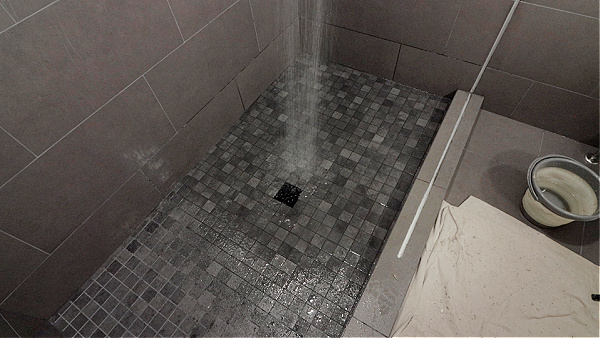
Water can get between the tile and the shower pan. One common myth is that grout is waterproof. Most grout is cementitious. As such, water can penetrate through it and absorb into the thin-set layer below the tile inside a shower. And that’s why shower pan waterproofing is so important.
One of the biggest problems with tile shower floors is wasting time and money.
Before I discuss what tiles to use, I’d first like to share which tiles are the worst for shower floors.
The Worst Tiles for Shower Floors
I’ll keep this short and sweet.
Here are my least favorite tiles for shower floors
- Marble (of any kind)
- Stone
- Penny
Marble is a bad choice because it’s porous and smooth.

Because marble can absorb water, it can easily discolor over time.
Grout, shampoo, soap, and hair dye easily stain marble.
Plus, marble has to be sealed before installation, before grout, and periodically over time.
It’s a maintenance nightmare.
That said, I’ve reluctantly installed marble inside niches using TCNA standards.
But I would never do it on the shower floor without having my client sign some type of waiver.
Stone is also a headache on shower floors.
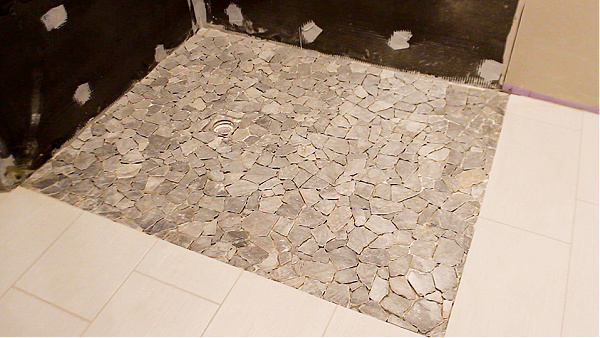
Just like marble, it should be sealed before and after installation.
Installation can be problematic because stones are typically irregular in shape.
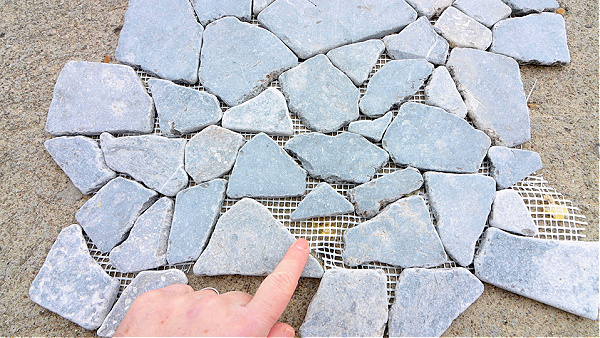
As such, it can be time-consuming to fit sheets together or set tiles individually.
Finally, penny tiles or small hexagons are also on my short list of tiles to avoid.
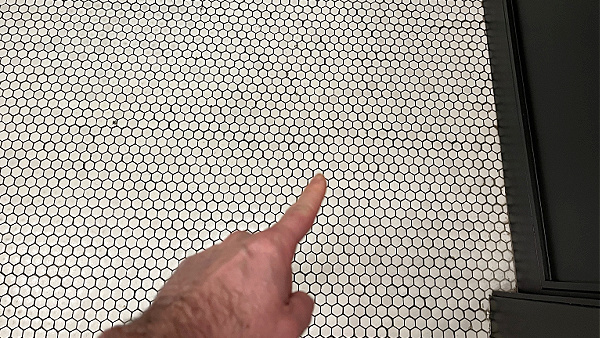
You run the risk of seeing sheet lines if you’re not careful.
And because the tiles are so small, grout becomes a maintenance problem over time.
I don’t recommend marble, stone, or penny tiles on shower floors.
What are some great tile options you should consider?
Porcelain Shower Floor Tile
Non-slip porcelain tile is excellent for shower floors.
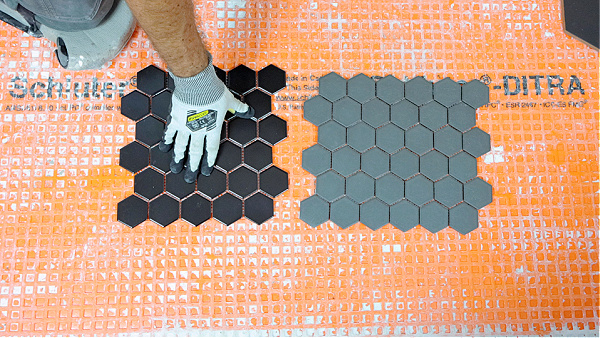
First, it’s the safest option because of the texture.
Showers are wet, and smooth tile is too slippery.
As such, choosing something that feet can grip is smart and safe.
Porcelain tile comes in many sizes and shapes.
As I mentioned above, the easiest tile to install over shower pans is a 2-inch square.
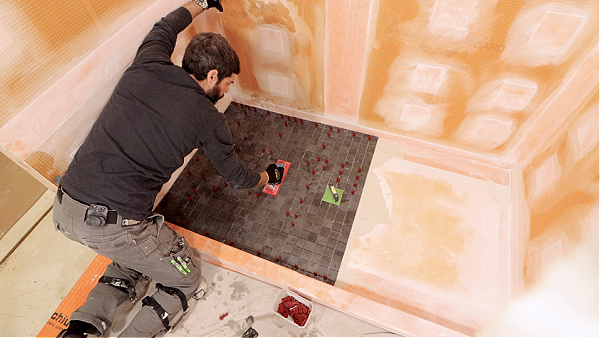
In addition, these tiles conform to the pre-slope of shower trays.
And that helps water drain properly.
The second best option would be a 2-inch hexagon mosaic from porcelain.
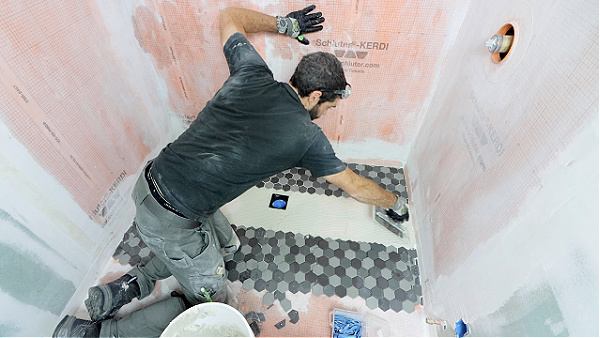
Admittedly, these are more challenging to install than squares.
But if you use a template it’s a lot easier.
Another option that I like is 4-inch porcelain tiles.
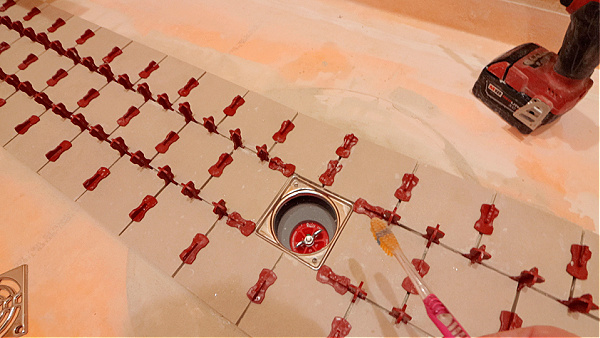
These work well if the shower point drain is 4 inches.
Sometimes they are set on mesh and sometimes they aren’t.
Either way, the 4-inch porcelain tiles are a good choice as well.
So far, I’ve only discussed mostly mosaic tiles.
What about large tile shower floors?
Large Tile Shower Floor Options
Lately, large tile shower floors have surfaced on social media.
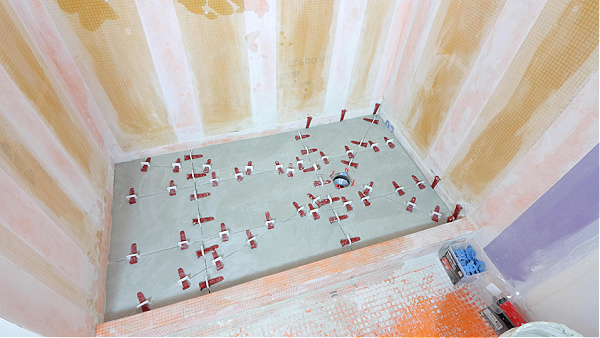
And some folks like this option because it’s less grout.
However, there are some challenges.
First, anything over 4 inches will likely need relief cuts if you’re using a point drain.
An example of a point drain is the Schluter KERDI-DRAIN.
What are relief cuts and why do you need them?
All showers have to be sloped to the shower drain.
I’ll use a square drain to explain this concept.
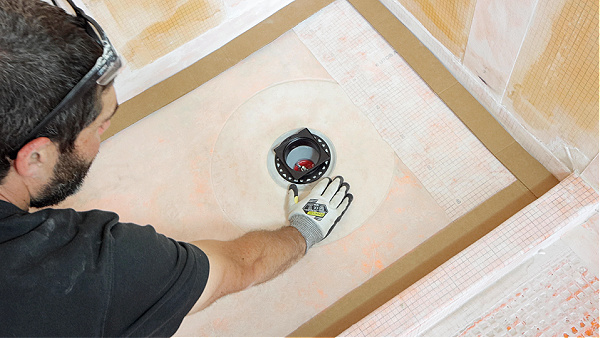
Squares have four corners.
Shower pans normally have four corners.
If you draw a line from the corner of the drain to the opposite shower corner,
That’s your relief cut.
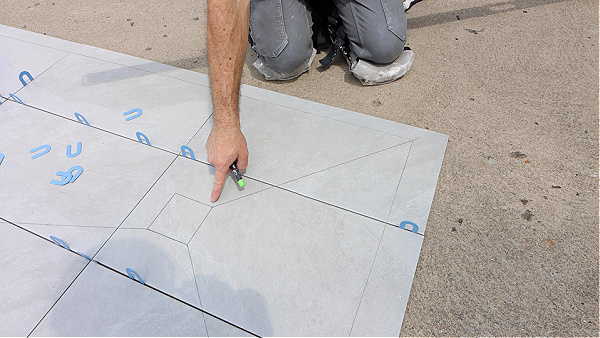
If large tiles don’t conform to the relief cuts, water won’t drain well.
Therefore, I recommend using a template to help cut the tiles.
I hot glue a template using either stiff cardboard or 1/4-inch plywood.
The template should account for the shower drain and shower walls.
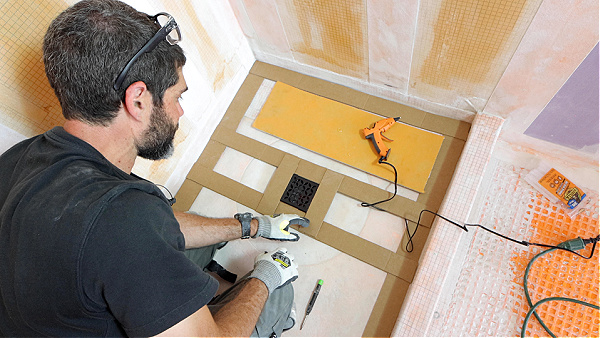
I place this template over the tiles and trace the drain location and shower walls on the tile.
I use the Pica Dry Pencil with wet jet inserts to perform this task.
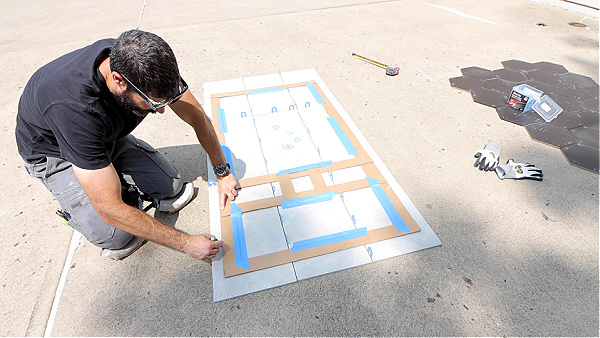
That way, when I use the wet saw or angle grinder, the marks will remain on the tile.
Then I dry-fit the tiles and ensure they all fit before thin-settling them to the shower tray.
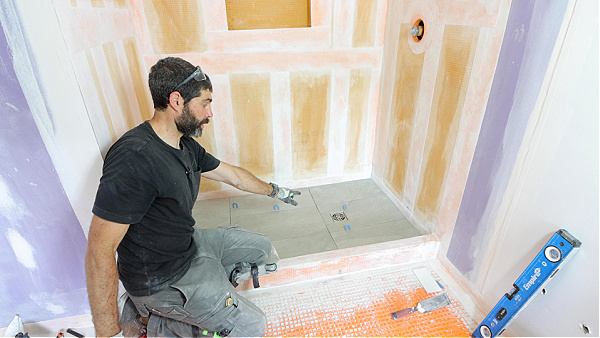
If you’re not up to the task of templating and making lots of cuts, don’t use large-format porcelain tile.
Instead, opt for a mosaic or the 4-inch tiles.
What’s Next
Choosing the right tile is important for your shower renovation.
If you’re remodeling a bathroom and need help, join our Platinum Membership.
I promise our step-by-step tutorials and Personal Coaching will make your life a lot easier.
Tap the button below to learn more
Jeff

